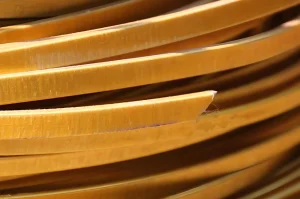
Introduction
Brief Overview of GFRP
Glass Fiber Reinforced Polymer (GFRP) is a composite material made by embedding glass fibers in a polymer matrix. This combination results in a material that possesses the high strength of glass fibers and the versatility of polymers. GFRP is known for its excellent mechanical properties, thermal stability, and electrical insulation capabilities, making it a preferred material in various engineering applications, including transformers.
Importance of GFRP in Modern Electrical Engineering
In modern electrical engineering, the performance and reliability of components are crucial. Transformers, being vital in power distribution and regulation, require materials that ensure durability, efficiency, and safety. Here’s why GFRP meets these demands:
First, GFRP offers high strength and durability. The high tensile strength of GFRP makes it ideal for structural components that need to withstand mechanical stresses. This durability extends the lifespan of transformers and reduces maintenance needs.
Next, the thermal stability of GFRP allows it to maintain its properties under high temperatures. This makes GFRP suitable for components exposed to thermal stress, ensuring consistent performance in varying conditions.
Additionally, GFRP provides excellent electrical insulation. By preventing electrical faults and ensuring safe operation, GFRP contributes to the overall safety of transformers.
Moreover, the lightweight nature of GFRP helps in reducing the overall weight of transformer components. This ease of handling facilitates installation and maintenance, making the process more efficient.
Finally, GFRP’s resistance to corrosion and chemical attacks enhances the longevity of components, especially in harsh environments. This resistance ensures that transformers remain reliable over extended periods, even under challenging conditions.
Integrating GFRP into transformers not only enhances their performance and reliability but also contributes to the overall efficiency of power systems. As the demand for more robust and efficient electrical infrastructure grows, the use of GFRP in transformer technology becomes increasingly significant.
What is Glass Fiber Reinforced Polymer (GFRP)?
Definition and Composition
Glass Fiber Reinforced Polymer (GFRP) is a composite material consisting of glass fibers embedded within a polymer matrix. The glass fibers, typically made from silica-based materials, provide high tensile strength and stiffness. The polymer matrix, which can be made from various types of resins such as epoxy, polyester, or vinyl ester, serves to bind the fibers together and transfer loads between them. This combination results in a material that leverages the strengths of both components: the high strength and stiffness of the glass fibers and the flexibility and durability of the polymer.
Key Properties of Glass Fiber Reinforced Polymer (GFRP)
High Mechanical Strength
GFRP exhibits exceptional mechanical strength due to the reinforcement provided by glass fibers. This high tensile strength allows GFRP to withstand significant loads and stresses, making it ideal for structural applications where durability and reliability are paramount.
Thermal Stability
GFRP maintains its structural integrity and performance across a wide range of temperatures. It can withstand both high and low temperatures without significant degradation, ensuring consistent mechanical properties over time. This thermal stability makes GFRP suitable for applications exposed to varying environmental conditions.
Electrical Insulation
One of the critical properties of GFRP is its excellent electrical insulation capabilities. The polymer matrix effectively isolates the glass fibers, preventing electrical conductivity. This property is essential in applications where electrical insulation is crucial to avoid short circuits or electrical failures, such as in electrical enclosures and components.
Applications of GFRP in Transformers
Insulating Components
Glass Fiber Reinforced Polymer (GFRP) is used extensively in transformer insulation, providing robust barriers and enhancing electrical isolation between components. Key applications include:
Insulation Barriers: GFRP barriers separate different electrical components within the transformer, preventing electrical arcing and ensuring safe operation.
Spacers: GFRP spacers maintain precise distances between windings and other components, optimizing electrical performance and mechanical stability.
Support Structures
GFRP’s high mechanical strength and durability make it ideal for supporting transformer components under varying loads and conditions:
Beams and Braces: GFRP beams and braces reinforce structural integrity, supporting the weight of transformer coils and ensuring long-term stability.
Windings Support: GFRP supports windings, minimizing deformation and vibration during operation, which helps maintain electrical efficiency and reliability.
Enclosures and Casings
GFRP enclosures and casings protect internal transformer components from environmental factors and mechanical stress:
- Protection Against Environmental Factors: GFRP enclosures shield transformers from moisture, dust, and other contaminants, preserving insulation integrity and extending service life.
These applications highlight GFRP’s versatility and effectiveness in enhancing transformer performance, reliability, and longevity. As a lightweight, corrosion-resistant material with excellent electrical insulation properties, GFRP contributes significantly to the efficiency and safety of electrical systems in various industrial and infrastructure settings.